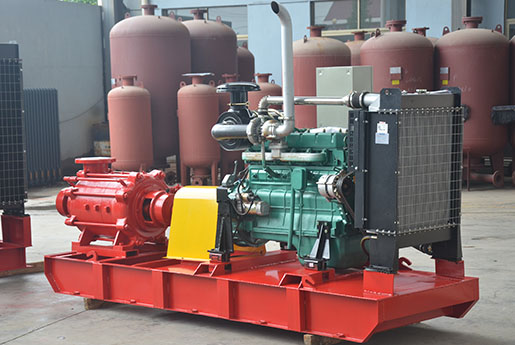Layout of diesel pump room
The layout of a diesel fire pump room can vary based on the vessel type, size, regulations, and the specific requirements of the vessel's classification society. However, I can provide you with a general outline of the components and considerations that might be found in a diesel fire pump room layout:
-
Diesel Engines: The heart of the fire pump room is the diesel engine(s) that power the fire pump(s). These engines are typically installed on sturdy foundations and equipped with all necessary components for operation and maintenance.
-
Fire Pumps: The fire pumps, driven by the diesel engines, are responsible for supplying water to the vessel's firefighting systems. These pumps should be easily accessible for maintenance and inspection.
-
Piping and Valves: There will be a network of piping and valves connecting the fire pumps to the vessel's fire mains and other firefighting systems. These pipes and valves should be appropriately labeled for quick identification and operation during emergencies.
-
Fuel Storage and Supply: As the diesel engines require fuel to operate, provisions for fuel storage and supply should be present. This might include fuel tanks, filters, and fuel lines.
-
Ventilation: Adequate ventilation is crucial in a diesel fire pump room to ensure proper air exchange and cooling of the engines. Ventilation systems might include fans, vents, and exhaust ducts.
-
Electrical Systems: The fire pump room will require electrical systems for powering the diesel engines, pumps, and associated equipment. Electrical panels, switches, and wiring should be properly installed and protected.
-
Emergency Power: In the event of a power failure, it's important for the fire pump room to have access to emergency power sources to ensure the fire pumps can still function.
-
Fire Suppression and Detection: Fire detection and suppression systems might be installed within the fire pump room itself to provide an added layer of safety in case of an engine or fuel-related fire.
-
Fireproofing and Insulation: Fire pump rooms should be constructed with fire-resistant materials and insulation to contain any potential fires within the room and prevent the spread of flames.
-
Lighting: Adequate lighting should be provided to ensure visibility and safety within the fire pump room during routine maintenance and emergencies.
-
Access and Egress: The fire pump room should have clearly marked access points for personnel to enter and exit. Additionally, these access points should comply with safety regulations and provide a means of escape in case of emergencies.
-
Monitoring and Alarms: Monitoring systems should be in place to track the performance of the fire pumps, diesel engines, and other critical parameters. Alarms and notification systems should alert personnel to any malfunctions or issues.
-
Safety Equipment: Fire extinguishers, emergency showers, and other safety equipment should be strategically placed within the fire pump room for immediate use in case of an emergency.
Remember, the specific layout and design of the diesel fire pump room will be influenced by the vessel's characteristics and the regulations it needs to adhere to. Consulting with naval architects, marine engineers, and regulatory authorities will help ensure that the design meets all necessary requirements for safety and functionality.


.png)
.png)

.png)


